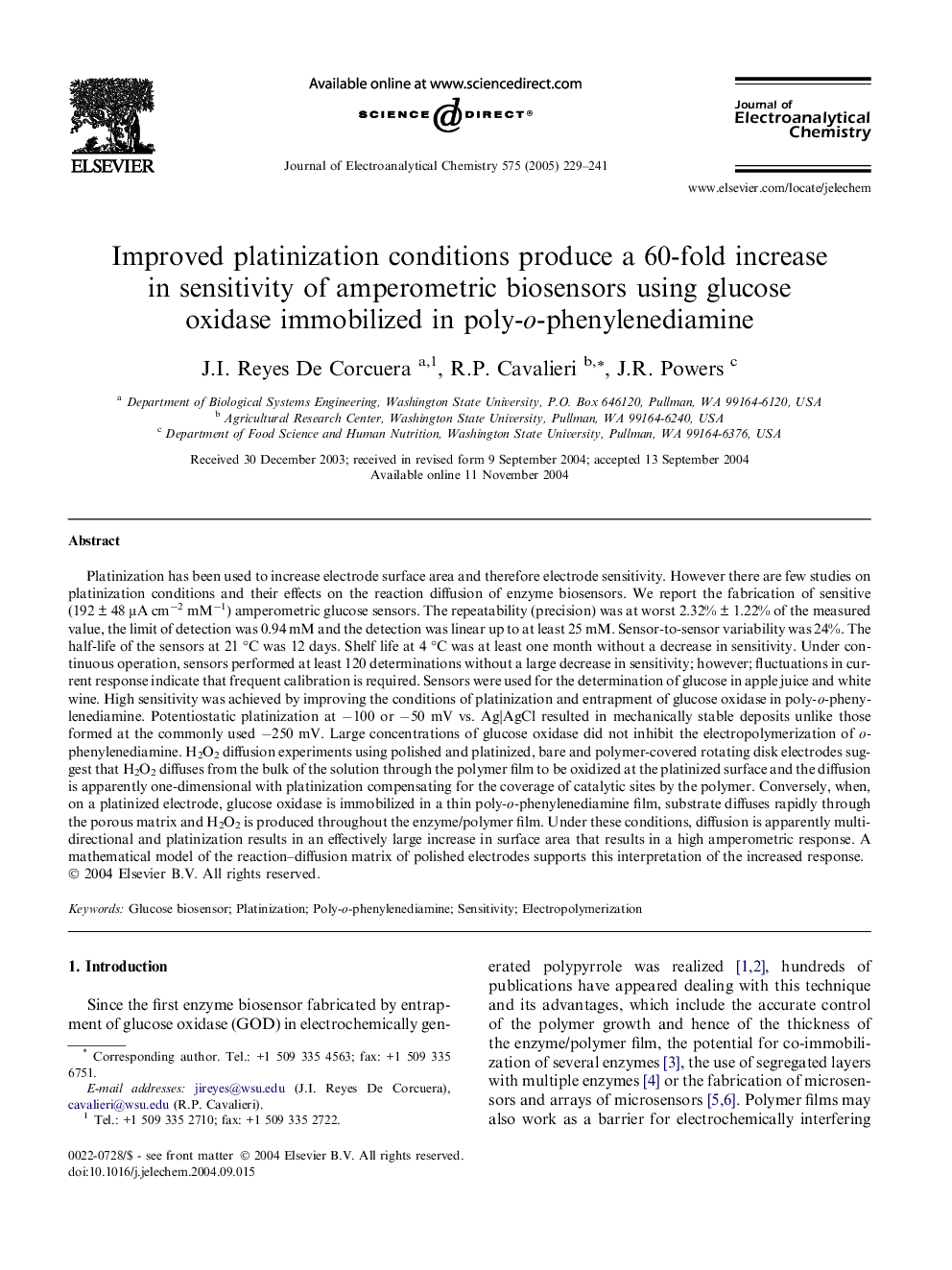| کد مقاله | کد نشریه | سال انتشار | مقاله انگلیسی | نسخه تمام متن |
|---|---|---|---|---|
| 10275987 | 463412 | 2005 | 13 صفحه PDF | دانلود رایگان |
عنوان انگلیسی مقاله ISI
Improved platinization conditions produce a 60-fold increase in sensitivity of amperometric biosensors using glucose oxidase immobilized in poly-o-phenylenediamine
دانلود مقاله + سفارش ترجمه
دانلود مقاله ISI انگلیسی
رایگان برای ایرانیان
کلمات کلیدی
موضوعات مرتبط
مهندسی و علوم پایه
مهندسی شیمی
مهندسی شیمی (عمومی)
پیش نمایش صفحه اول مقاله

چکیده انگلیسی
Platinization has been used to increase electrode surface area and therefore electrode sensitivity. However there are few studies on platinization conditions and their effects on the reaction diffusion of enzyme biosensors. We report the fabrication of sensitive (192 ± 48 μA cmâ2 mMâ1) amperometric glucose sensors. The repeatability (precision) was at worst 2.32% ± 1.22% of the measured value, the limit of detection was 0.94 mM and the detection was linear up to at least 25 mM. Sensor-to-sensor variability was 24%. The half-life of the sensors at 21 °C was 12 days. Shelf life at 4 °C was at least one month without a decrease in sensitivity. Under continuous operation, sensors performed at least 120 determinations without a large decrease in sensitivity; however; fluctuations in current response indicate that frequent calibration is required. Sensors were used for the determination of glucose in apple juice and white wine. High sensitivity was achieved by improving the conditions of platinization and entrapment of glucose oxidase in poly-o-phenylenediamine. Potentiostatic platinization at â100 or â50 mV vs. Agâ£AgCl resulted in mechanically stable deposits unlike those formed at the commonly used â250 mV. Large concentrations of glucose oxidase did not inhibit the electropolymerization of o-phenylenediamine. H2O2 diffusion experiments using polished and platinized, bare and polymer-covered rotating disk electrodes suggest that H2O2 diffuses from the bulk of the solution through the polymer film to be oxidized at the platinized surface and the diffusion is apparently one-dimensional with platinization compensating for the coverage of catalytic sites by the polymer. Conversely, when, on a platinized electrode, glucose oxidase is immobilized in a thin poly-o-phenylenediamine film, substrate diffuses rapidly through the porous matrix and H2O2 is produced throughout the enzyme/polymer film. Under these conditions, diffusion is apparently multidirectional and platinization results in an effectively large increase in surface area that results in a high amperometric response. A mathematical model of the reaction-diffusion matrix of polished electrodes supports this interpretation of the increased response.
ناشر
Database: Elsevier - ScienceDirect (ساینس دایرکت)
Journal: Journal of Electroanalytical Chemistry - Volume 575, Issue 2, 1 February 2005, Pages 229-241
Journal: Journal of Electroanalytical Chemistry - Volume 575, Issue 2, 1 February 2005, Pages 229-241
نویسندگان
J.I. Reyes De Corcuera, R.P. Cavalieri R.P. Cavalieri, J.R. Powers,